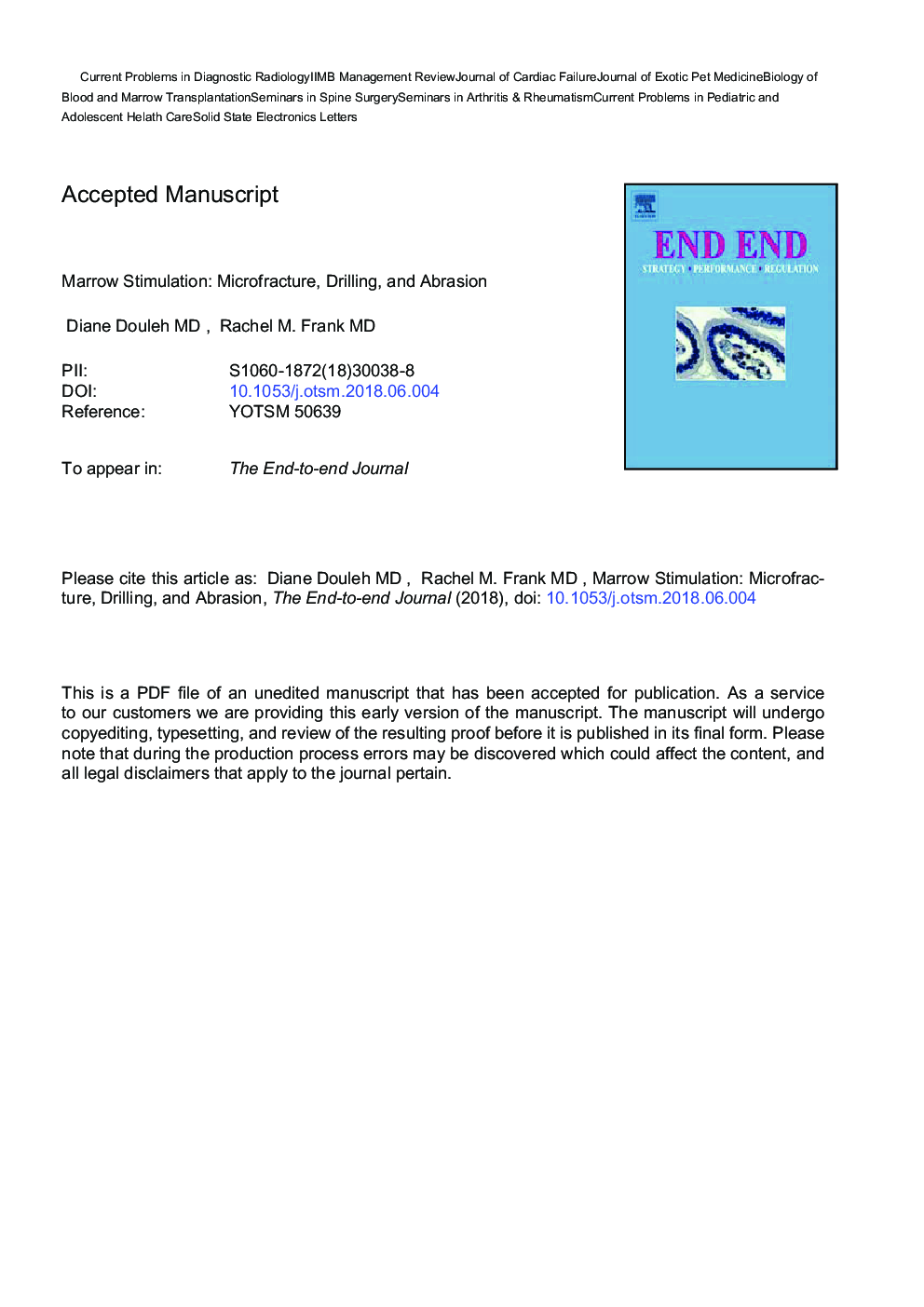| Article ID | Journal | Published Year | Pages | File Type |
|---|---|---|---|---|
| 10221482 | Operative Techniques in Sports Medicine | 2018 | 20 Pages |
Abstract
Articular cartilage defects of the knee are a common occurrence, affecting quality of life and function. A variety of surgical options are available to treat symptomatic chondral defects, including marrow stimulation. Microfracture is the most common marrow stimulation technique, and is a single-stage reparative technique aimed to stimulate marrow and the associated chondroprogenitor cells, resulting in the formation of fibrocartilaginous tissue. Microfracture and other marrow stimulation techniques work by allowing a variety of marrow substrates to leave the subchondral bone and “fill” the chondral defect, ultimately producing a clot of cartilage containing mostly fibrocartilage (type I collagen). Different than hyaline cartilage, this fibrocartilage repair tissue does not have the intrinsic biochemical and viscoelastic properties of hyaline cartilage (type II collagen), which is the predominant form of cartilage lining the articular surface. A major advantage of microfracture is its technical simplicity and low cost, as microfracture is typically performed arthroscopically as a single-stage procedure, without the need for implants or disposable devices. In addition, microfracture can easily be performed in conjunction with other procedures including meniscus surgery or ligament reconstruction, without the knee for additional incisions and without much added surgical time. This manuscript will focus on marrow stimulation techniques for chondral defects of the knee.
Related Topics
Health Sciences
Medicine and Dentistry
Orthopedics, Sports Medicine and Rehabilitation
Authors
Diane MD, Rachel M. MD,
